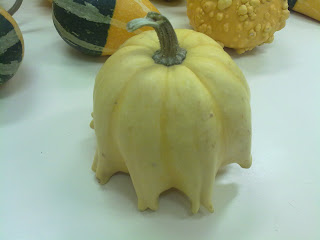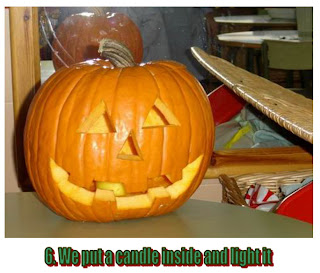Students:
Do you want to elaborate by yourself a funny Halloween mask. Follow these easy steps and get your beautiful Jack O' Lantern mask for Halloween.
1. We'll need orange card
2. We divide the orange card in different rectangles, taking the size of the half of a A4 sheet, more or less
3. We cut the orange card
4. We'll got a mask for each rectagle
5. We take one piece and fold it in half
6. We fold it again in a half
7. We cut in a corner
8. We unfold it and we can see it in that way
9. We fold the top of this piece of paper in this way
10. And we make a cut in a triangle shape
11. This is the cut we have made
12. Now we unfold that part and we make a cut on the bottom on the card
13. And we have to do a final cut
14. And this is our final result. You can make two holes and add elastics
Level: From Childhood up to 2nd cycle of Primary School.
Teachers:
Students love mask and they like to wear them for Halloween. But there are differents ways to explain this activity. If you are going to work with students of Primary School you can tell them they are going to create a Halloween character mask. You need to have work with them the Halloween vocabulary before by, for example, showing pictures or flashcards about Halloween characters: Jack O' Lartern, witch, ghost, bat, etc. We are going to create a Jack O' Lantern mask but they don't know, so you can to motivate them by asking what is the Halloween character they are going to create because they only will find out at the end.
For Childhood children we are going to tell a story like this (you need to see the pictures to understand it):
There is a boy and girl that want to build a Halloween house. Firstabke they build a roof. But as they want to see the scenery they need also to create a window.
-Oh, It's a beautiful house with a beautiful window but how we come in?, say the girl.
-You are right, say the boy, we need to create a door. And they do a door.
- It's something missing, say the girl.
-The cat flap! Shouted the boy. And they built a cat flap. And finally they finished their Halloween house (and you show them the mask).

















































